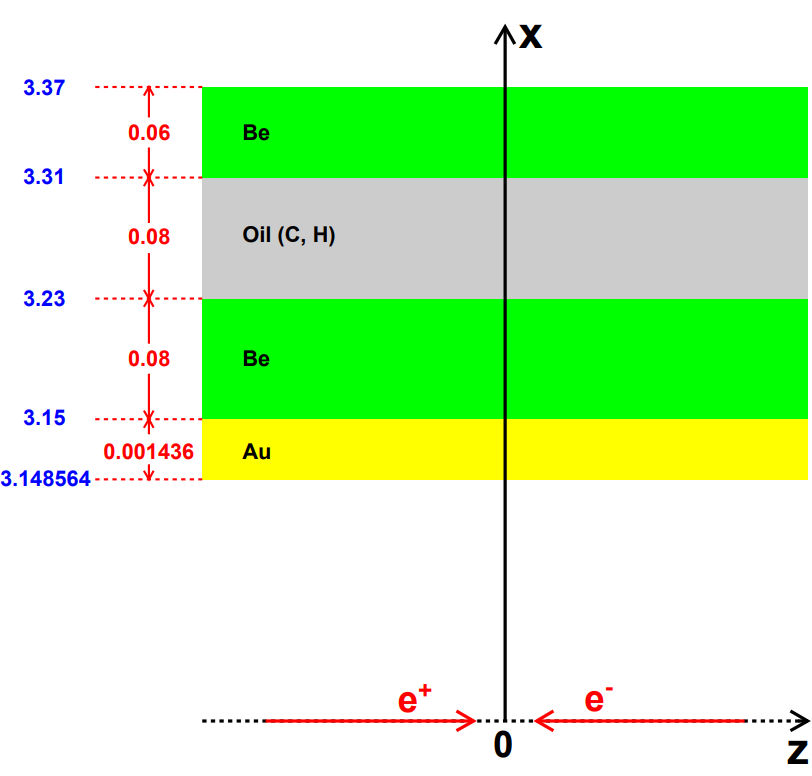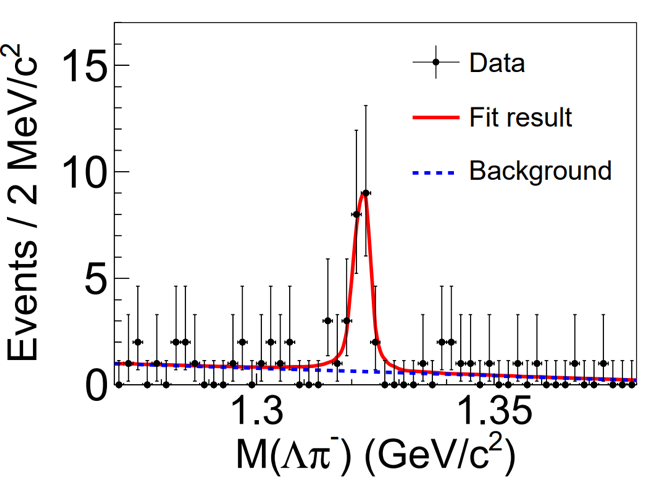

The BESIII collaboration recently reported the first study of hyperon-nucleon reaction Ξ0n→Ξ-p with “Ξ0 beam” from the decay J/ψ→Ξ0 anti-Ξ0 based on 10 billion J/ψ data. This is the first study of hyperon-nucleon interaction in electron-positron collisions, and opens up a new direction for such research. The results have been published recently in Physics Review Letters on June 21, 2023 [Phys. Rev. Lett. 130, 251902 (2023)].
Scattering experiments of high energy particle beams bombarding target materials have been of great significance for studying the inner structure of matter and the fundamental interactions. Charged long-lived particle beams such as π± and K± can be easily produced, and relevant research results have been very rich. However, limited by the availability and short-lifetime of hyperon beams, the progress of corresponding research is very slow, although measurements of these hyperon beams bombarding target materials are crucial for understanding non-perturbative quantum chromodynamics. In addition, the hyperon-nucleon reaction also can be used to search for the postulated H-dibaryon, which has strangeness -2 and valence quark structure uuddss. Furthermore, the study of hyperon-nucleon interaction is also important to determine the equation of state for dense nuclear matter and understand the so-called “hyperon puzzle” of neutron star.
In this work, a novel method is used to study hyperon-nucleon interaction based on hyperons produced in the decay of 10 billion J/ψ events collected with the BESIII detector at the BEPCII storage ring, and the beam pipe can be taken as the target material. The reaction Ξ0n→Ξ-p is observed with about 20 signal events for the first time, and the cross section of the reaction Ξ0+9Be→Ξ-+p+8Be is determined to be (22.1±5.3stat±4.5syst) mb at the Ξ0 momentum of 0.818 GeV/c. If the effective number of reaction neutrons in a 9Be nucleus is taken as 3, the cross section of Ξ0n→Ξ-p for a single neutron is determined to be (7.4±1.8stat±1.5syst) mb, consistent with theoretical predictions. In addition, no any significant H-dibaryon signals are observed in the Ξ-p final state for this reaction process. Other hyperons and nucleon interactions can also be studied in this way, such as Λ and Σ.

FIG. 1. Schematic diagram of the beam pipe, the length units are centimeter (cm).

FIG. 2. Distribution of M(Λπ-) in data.
Further reading:
PRL publication link: https://link.aps.org/doi/10.1103/PhysRevLett.130.251902
arXiv link: https://arxiv.org/abs/2304.13921